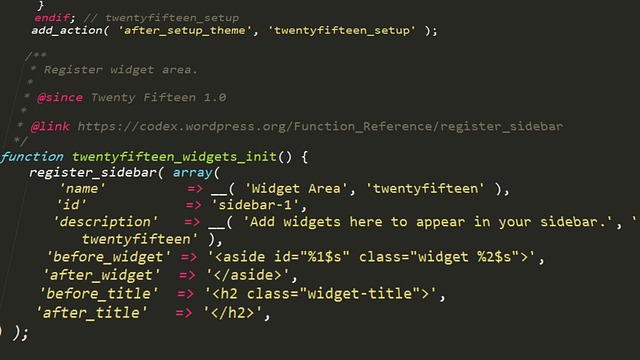Technology has become an integral part of modern life, and with the advancements in web development it is crucial to deliver applications that are both robust and visually attractive. React.js is a JavaScript library developed by Facebook to provide developers with an efficient and modern way to quickly construct user interfaces and enhance web applications. However, the question of how React.js manages to speed up the process in real-time remains unanswered. What advances does it provide for web developers? How can React.js be applied to improve web application performance? Can it really provide faster results?
The challenge faced by web developers is how to reduce the amount of time required to deliver applications while ensuring that there are no errors and that compatibility is retained across devices. This is not an easy task, but React.js makes it manageable. By providing developers with a declarative, component-based approach to web development, it ensures that web applications are maintained efficiently and with fewer lines of code. This reduces the number of errors as well as the time taken to update or develop the web application, thereby cutting down the development time significantly. Furthermore, with the release of the React Native, developers are now able to develop for multiple platforms simultaneously, further reducing development times.
In this article you will learn about the components of React.js, its advantages, and how it can be used to increase real-time speeds for web applications. How this library has revolutionised web development, from its speedy virtual DOM rendering to its efficient component-based approach, will be explored. Different testing strategies for the React.js environment that can be employed to ensure that applications remain bug-free and performance is consistently good will also be discussed, emphasising the need for thorough testing. Finally, some common mistakes to look out for when using React.js, and how to avoid them, will be covered.
By understanding the advantages of utilising React.js, as well as the pitfalls to be aware of, developers can be confident of achieving the best results when building their web applications. With this new insight into React.js and its capabilities, developers can truly utilise its potential and create attractive and robust applications quickly and efficiently.

Defining React.js to Speed Up Process in Real Time
React.js is a JavaScript library that has been designed to help developers create high-end user interfaces. React.js works by building a virtual DOM (Document Object Model) that the browser can utilize, which makes it faster than traditional methods. React.js is also capable of quickly updating components that have changed, allowing for fast and efficient updates in real time. In short, React.js speeds up the process by reducing the number of tasks that a developer needs to tackle in order to update a page in real time.
One of the main definitions surrounding React.js is its component based development approach. With React.js, components are created using JavaScript, HTML, and CSS. These components are then grouped together in order to create a complete user interface. This process helps speed up development, as developers only need to create components and then group them in order to quickly and easily create a full user interface.
Another key definition is React.js’s virtual DOM. This is a tree structure that stores all of the information associated with elements on a page. Whenever an element changes on the page, the virtual DOM is updated accordingly. This allows for fast updates in real time, further speeding up the process.
Finally, React.js is often used to implement various user interface features. This ranges from handling events such as clicking on a button, to managing data such as keeping track of user inputs. All of these features can then be quickly updated and implemented in real time, which further speeds up the process.
In conclusion, React.js speeds up the process by reducing the number of tasks a developer needs to tackle in order to update a page in real time. This is achieved through React.js’s component based approach, its virtual DOM, and the implementation of user interface features. All of these factors combine to make React.js an extremely efficient tool for speeding up the process in real time.
Keyword: React.js
React.js is one of the most popular JavaScript libraries that allow developers to reduce the time required to develop complex user interfaces. Its speed and simplicity makes it ideal for modern web development projects that require fast turnaround times. In addition, React.js can be used to develop both client-side and server-side applications.
What is React.js?
React.js is an open-source, front-end JavaScript library for building user interfaces (UIs). It was created by Facebook in 2013 and is actively maintained by the open-source community. React uses declarative views to make the code simpler and more efficient, resulting in the development of components that are more maintainable and easier to debug. React is used to build dynamic user interfaces, such as single-page applications, and for mobile UIs, as well as for server-side rendering and native applications.
How Does React.js Speed Up Development?
React.js brings many advantages to the development and deployment of applications and websites. Here are a few of the ways React.js speeds up the development process:
- It makes the development of components faster by using a declarative approach.
- It provides fast and effective debugging tools.
- It lets developers focus on the functionality of the application rather than the UI.
- It reduces the development and deployment time of applications.
- It allows developers to work in a more modular and reusable environment, making code simpler to maintain and debug.
React.js also enables developers to use core concepts of web development, such as data binding, and create powerful user interfaces without having to rewrite the code every time. This allows developers to focus on the application logic instead of dealing with the UI complexity. The improved development speed with React.js also greatly reduces the development time and cost of applications.
Finally, React.js has a vibrant ecosystem of third-party tools and libraries. These tools and libraries make it easier for developers to build and maintain applications, further increasing development speed and lowering costs. Thus, React.js facilitates the rapid development and deployment of applications and websites, making it a great choice for modern web development projects.
Unlocking Real Time Speed with React.js
Unlocking Real Time Speed with React.js
Using the Virtual DOM for Rapid App Development
Have you ever asked yourself how much faster can web applications be made? What technology is available to push the boundaries of the web development? React.js provides an answer to these questions by allowing developers to use a virtual DOM (Document Object Model) to create apps with rapid speed and responsiveness.
At the heart of React.js is the virtual DOM, built-in to the framework. It helps developers quickly create apps without dealing with the complexities of manually manipulating the DOM. It also can greatly reduce the amount of time needed to test and fix bugs in an application. So why is the virtual DOM so powerful when it comes to speed?
Why React.js is Achieving Top Speed?
The central factor contributing to the quick speed of React.js is that it only updates the parts of the UI that actually need to be updated, versus having to update the entire page as with other approaches. This makes the React.js performance lightening fast for the user while ensuring an optimized development process for the developer.
Additionally, due to the way React.js works with its virtual DOM, it can detect when different components are connected to each other. This allows the React.js’s algorithm to make real-time changes in response to user activities much faster than a traditional DOM would be able to do. The result is faster web applications with improved performance across platforms.
Another reason why React.js is achieving top performance is because of its use of JavaScript. By leveraging the power of the language, it can use the same code on both the server side and the client side, as this greatly reduces the time required to develop a web application. Furthermore, the JavaScript is more versatile and supports different platforms such as iOS, Android, and Windows. This capability has made React.js not just popular with web developers but also mobile developers as well.
Embracing React.js for Real Time Speed
To take full advantage of the real-time speed of React.js and the virtual DOM, developers should design applications by focusing on components rather than pages. This helps developers identify what elements need to be rendered and also allows for better reuse code.
Additionally, developers should strive to keep their components pure by avoiding side-effects and state changes outside of the component. This helps ensure that the components are independent and can be reused in other locations. Lastly, developers should utilize the native components and plugins available on the React.js ecosystem. This will ensure that the code being written is optimized and as fast as possible.
In conclusion, React.js provides developers the power to create fast-performing applications with its virtual DOM. By embracing the features available in React.js, developers can gain a lot of development efficiencies, allowing them to unlock maximum real-time performance.
Exploring the Power of React.js for Faster Development
What’s so Special About React.js?
At the heart of React.js is the idea that writing code can be made easier, faster, and more efficient when developers work together. This is accomplished through a revolutionary new approach known as component-based development. This allows developers to break complex tasks into smaller, more manageable components, each taking care of one specific aspect of the project. React.js makes it possible to quickly assemble these components into larger applications, making the development process dramatically faster. But just how exactly does React.js make development faster?
Breaking Down Complexity
One of the biggest challenges facing developers today is complexity. Building applications can be incredibly complex, with numerous components that need to be juggled and arranged. React.js shines in this regard because it simplifies complex tasks by breaking them down into individual components. Each component can then be worked on independently, allowing developers to focus on one piece at a time and work together seamlessly to complete the overall project. This approach allows React.js to speed up the development process dramatically, allowing developers to move rapidly regardless of the complexity of the task.
Encouraging Collaboration
At the heart of React.Js lies the concept of collaboration. This makes it easier for developers to build upon each other’s work to create a larger, coordinated application quickly and efficiently. By building applications based on component-based development, React.js encourages developers to work together to create applications faster while staying organized. Developers can create powerful and dynamic applications in a short amount of time, while also having the ability to build upon the work of others for complex tasks. As a result, React.js has the potential to significantly speed up the development process.
React.js has revolutionized the development process, offering developers a powerful tool for quickly assembling applications. By breaking down complex tasks into manageable components, React.js simplifies the development process and encourages collaboration amongst developers. This approach not only speeds up the development process, but also helps build larger, more organized applications quickly and efficiently. With React.js developers no longer have to waste time on complex tasks, instead they can focus on what really matters – creating powerful applications for the real world.
Conclusion
With the advent of web development technologies such as React.js, it’s becoming increasingly evident that web design and development are becoming more efficient and faster than ever before. But just how much of a real-time speed-up does React.js offer for the development process?
React.js offers significant improvements in terms of web development performance while also offering major functionality improvements. React.js allows developers to easily reorganize their projects in real-time, allowing for faster execution of code and quicker turnarounds on any type of development project. It also provides increased responsiveness to user interaction by taking advantage of an efficient virtual DOM that is kept separate from the actual DOM. Users can expect dynamic user interfaces with improved site loading times provided by React.js.
Along with these performance advantages, React.js also provides cost savings for larger projects as code reuse and refactoring become available. As developers become more familiar with React.js, they can create faster, more reliable and more efficient applications, allowing businesses to save on costly development time. To discover more about the real-time speed-up benefits that React.js provides, it is important to stay abreast of developments in this field. Be sure to follow our blog for news of new releases and updates relating to React.js and other web development technologies.
F.A.Q.
Q1: What is React.js?
A1: React.js is an open-source, JavaScript library used for building user interfaces and web applications. It is maintained by Facebook and a community of developers. It can be used with a combination of other JavaScript libraries or frameworks to build complex Single Page or Mobile Applications. React.js allows developers to create large web applications that can change data without reloading the page.
Q2: What are the benefits of using React.js?
A2: React.js offers the benefit of having a virtual DOM, increased performance as only the components that change are re-rendered, and the ability to use version control systems to keep track of changes. Additionally, developers can use JSX and ES6 in React.js which make the code more readable and easier to maintain.
Q3: How can React.js speed up development time?
A3: React.js provides developers with an array of tools and libraries that make development faster. Developers can break down large applications into smaller manageable components, creating reusable code. Furthermore, React.js gives developers the ability to make changes with much less code, thanks to its declarative nature. This allows for faster development as developers no longer have to worry about tracking and maintaining data flows throughout the application.
Q4: What is the syntax of React.js?
A4: React.js uses JavaScript ES6 syntax combined with JSX, a special syntax extension. This creates a simpler syntax that makes it easier for developers to write code in a declarative style. Additionally, React.js allows developers to use a functional programming paradigm which allows for faster and more efficient development.
Q5: Does React.js allow for real-time updates?
A5: Yes, React.js allows for real-time updates due to its virtual DOM. The virtual DOM helps to track data changes quickly and efficiently which results in processes being updated in real time. This helps developers create large and complex applications with dynamic and responsive data without reloading the page.



